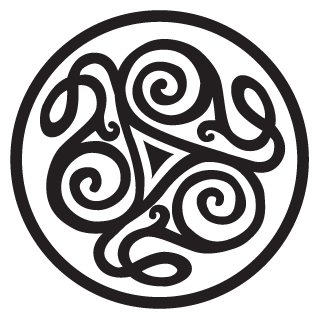Embodied Creativity & Body Wisdom
Embodied Wisdom - Detail from acrylic painting
“Often the hands know how to solve a riddle with which the intellect has wrestled in vain.”
Embodied Wisdom
In the contemporary Western world, the inherent knowledge held within our bodies is often marginalised. Yet, this is the same knowing that surfaces when we have an intuition, a ‘gut’ feeling or other guiding felt-sense. Marion Woodman, in Sitting By The Well, states that authentic imagery is stored in our musculature. Similarly, in Living Deeply, the authors emphasise that “body-oriented practices reveal to you truths that have been stored in the wisdom of your cells, muscles and movement.” Using your hands to play or build can provide a key to intentionally unearthing this deeper wisdom that is beyond the reach of your discursive mind.
Carl Jung’s spontaneous creations
When Carl Jung faced a problem he carved stone and wood, modelled clay and painted. This was his method of allowing normal waking consciousness to dissolve. In doing so, he found that concerns often worked themselves loose, or he gained new insights that were not previously available.
Jung had embarked on an inner enquiry because he was experiencing a strong feeling of unease that he could not attribute to anything. When a childhood memory resurfaced of building structures with pebbles and mud he experienced significant emotion and realised that this child still existed within him. He understood that play could be the key to recovering a lost part of himself that possessed a natural creative spirit.
At first, Jung was reluctant to indulge in a “child’s life with his childish games” but felt that he had no option. He began gathering pebbles and stones and creating a miniature village. Later, he saw this as a turning point in his life.
How did you engage creatively with the world as a child?
Is there a way you can reclaim any of these playful activities?
While constructing a miniature village, Jung found a red pyramid-shaped stone that was the key to unlocking the meaning of a childhood dream.
Connecting with the unconscious
Jungian analyst, Jill Mellick, states that “the more organic and unfamiliar the medium, the closer the creative experience lies to the maker’s unconscious.” So, if you are a seasoned artist or have a habitual way of working, consider what new materials or methods might elicit a fresh response. If you have a state-dependent creative block, playfully engaging with new materials may be a way to bypass it.
Absent-mindedly playing with clay, you may find unexpected forms developing. Unexpected marks or ‘accidents’ while painting can reveal meaningful shapes or evoke emotions. These can be representative of processes within the psyche - symbols of the unconscious. Take the time to consider them and play with the meaning as you go about your normal life. You may find that something that initially appeared to be accidental or inconsequential relates to something that has been simmering under the surface of your awareness. Information that is not available to your conscious mind can be expressed through the body in a symbolic, metaphorical language.
Authentic creative expression
Many of us have learned to limit our authentic physical expression. In doing so, we also restrict our access to our full wisdom and generative potential. In many respects, being in control of our primal impulses is essential because it enables us to fit in with society, hold down a job, and resist punching people who we find irritating. It is important to separate these helpful aspects of impulse control with ways that we might be suppressing the natural and harmless expression of our inner self.
Typically, we do not give the body the opportunity to express itself fully. Our muscles may be held tightly and perhaps only micro-expressions can escape. Gestalt psychologist, Fritz Perls, often worked with barely visible movements of his clients, telling them to ‘Make it larger!’ This type of bodily amplification can bring sudden insight into urges that have been suppressed. Perhaps that small gesture of tapping the leg will morph into a karate chop, and elicit a sudden realisation of something that needs to be metaphorically ‘chopped off’. These small gestures can also be enlarged onto the page of a sketchbook, allowed to manifest in a piece of clay, or given the freedom to arise through stream-of-consciousness writing. When we permit ourselves freedom of expression through creative play or authentic movement, we are naturally placing an intention to receive guidance.
References
Jung, C. G. (1963/1995). Memories, dreams, reflections.
Mellick, J. (2018). Piercing the mundane: The role of creative expression in transpersonal psychology. The Journal of Transpersonal Psychology, 50(2), 145-158.




